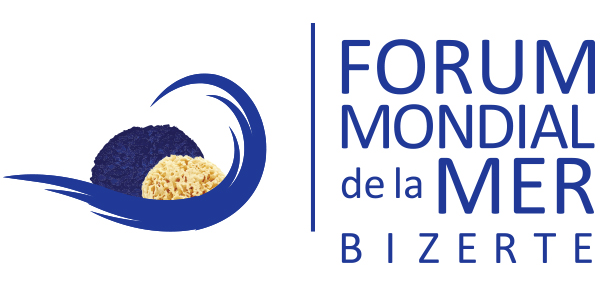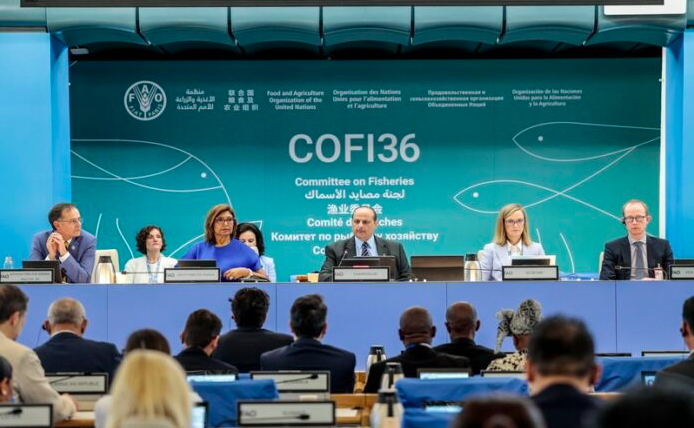A polytechnicien turned ocean sentinel, Marina Lévy navigates between scientific data and climate urgency. At once observer and actor, she charts a course defined by enlightened, understated, yet unwavering words.
In Marina Lévy’s home, the walls whisper of salt. A ceramic swimmer watches over the bookshelf, a mermaid rests on a shelf, and a fossilized fish sits unobtrusively on a corner of the table—as if it belonged there. “I didn’t think I had a favorite object,” she laughs, but her apartment suggests otherwise: every corner seems to echo the call of the sea. The ocean is not a backdrop; it’s a lifeline—a mystery both intimate and unfathomable. Marina herself seems built for the open sea: tall, calm, assured. She moves with the quiet confidence of someone who knows where she’s going.
When the photo session begins, she hesitates briefly and asks if she should put on shoes. At her place, ease never excludes sincere consideration for others. Then, smiling, she adds, “Oh, for once, it’s nice to see a female photographer.” A light comment, hinting at a deeper backdrop—there still aren’t many women in her profession.
“People see the sea as sailing, inspiration, poetry… Oceanography is science.”
Temperatures, currents, salinity, oxygen content, carbon and nitrogen cycles… Marina Lévy rolls off the terms with rare clarity, without oversimplifying their complexity. A graduate of Polytechnique, she could have stayed on the dry side of equations—but the sea called. Not through some spectacular moment, just a persistent sense of weightless wonder, found underwater.
“I loved scuba diving. It was pure wonder.”
And yet she never tried to force a harmony between awe and rigor; they simply coexist.
Her professional path reflects this gradual shift. The role of the oceanographer has evolved. Marina embodies this transformation:
“At first, my role was to be a careful observer—to gather data, to understand what was happening beneath the surface.”
Then, disaster after disaster, her scientific gaze sharpened into acute awareness:
“I became a witness to catastrophe.”
Today, she has taken it a step further: from witness to actor.
“It’s no longer just about observing or warning—it’s about bringing ideas and solutions so we can act, both in daily life and on a large scale.”
Her commitment deepens: she’s become a voice, co-authoring outreach books and advising the president of the IRD. She aims not only to describe—but to transmit and transform.
At the Nice conference, she introduced the Starfish Barometer, an unprecedented tool designed to turn science into action. Unlike a single indicator, Starfish offers a comprehensive view of ocean health: climate, fishing, tourism, human pressures, protection efforts…
“A new way to understand what’s happening in the sea—scientific but accessible,” she explains.
This annual snapshot is meant to guide decision-makers, giving them a clear and actionable picture. Marina welcomes a major step forward:
“Science was integrated at all levels” of the conference—a first for this kind of event. Funding, long absent, is beginning to follow: companies and philanthropists are getting involved.
Yet she remains clear-eyed: despite decades of warnings, climate goals are slipping away. The 1.5°C limit could be crossed within five years. And the ocean—central to climate—remains an afterthought. The first ocean-focused COP won’t take place until 2026.
“For years, the ocean was the great absentee of climate policy.”
This clarity stems from decades in a scientific world she had to learn to navigate. An oceanographer for thirty years, Marina had to carve out her place in a scientific landscape long shaped by disciplinary silos and silence around politics.
“For years, the ocean was the great absentee of climate policy,” she reminds us.
She’s among those scientists who refuse to remain silent.
That refusal means constant effort: building indicators, cross-referencing data, persuading decision-makers—and publishing. She co-authored The Ocean in 30 Questions, a small outreach book she speaks of fondly:
“Personally, I think it’s really important to make oceanography more accessible.”
Structured in three parts—understanding how the ocean works, identifying damage, offering solutions—the book serves as a bridge between science and the public.
No slogans. Just data, convictions, silences. She doesn’t aim to argue, but to equip, awaken, and connect. No grand speeches—just concrete gestures. She talks about carbon self-assessment, sobriety, diet.
“I think what’s needed is truly a sustainable lifestyle at the individual level. […] Try to pollute as little as possible, use as little plastic or other pollutants as possible. […] Eat less meat, fewer seafood products, choose more sustainable ones.”
She insists: these aren’t rigid rules.
“Even I am far from perfect.”
She says this without guilt or levity—just with the tension of someone striving to embody what they believe, even if they fall short. It’s a permanent demand, sometimes exhausting, but she reminds us:
“At the individual level, you can also inspire the collective.”
It’s this faith in the collective that keeps Marina from sinking, from giving in.
“I don’t feel eco-anxiety at all. I find this challenge incredibly stimulating. […] I wonder whether human intelligence will prevail. And I believe we have to believe in collective human intelligence.”
Because explaining the ocean is not just about sounding the alarm—it’s about coexisting, respecting the interdependencies of life. It may seem like a distant world. Too vast, too silent. And yet, in every breath, every drop of rain, the ocean is there. Indifferent to our borders. Marina Lévy has chosen to make it the center of her life.
Because we only protect what we truly understand.
Source: hum media



